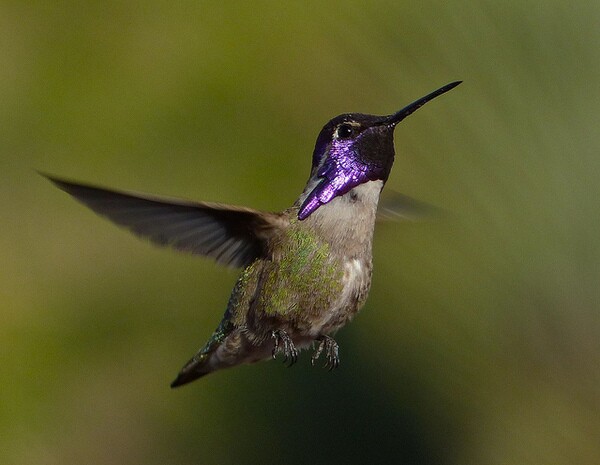Science Incomplete on 'Stealth' Solar Wildlife Deaths

We reported earlier this week on a suggestion by state agency scientists that the concentrated solar energy at the Ivanpah Solar Electric Generating System might be killing birds without causing obvious visible burns to their feathers or skin. Now, a Federal wildlife investigations lab says there's no evidence to support that claim -- but it also says that might be because bird carcasses are rarely recovered from Ivanpah in good enough condition to study.
On Monday, our report said that California Energy Commission staff scientists Geoff Lesh and Brett Fooks had uncovered evidence that Ivanpah's concentrated "solar flux" could be killing birds that fly through the facility without causing significant external damage.
But when the commission's Chris Huntley checked with the U.S. Fish and Wildlife Service's forensics lab in Ashland, Oregon to see whether investigators there concurred with Lesh and Fooks, the response was essentially that carcass surveys at Ivanpah haven't given the lab the material they'd need to say yes or no.
USFWS' National Fish and Wildlife Forensics Laboratory, part of the agency's law enforcement arm, is an end destination for some of the bird carcasses recovered at the Ivanpah plant. The lab released a report in April on Ivanpah and two other solar facilities in the California desert which documented the risk to birds and other flying wildlife of the concentrated solar flux at Ivanpah.
As we reported earlier, the commission's Lesh and Fooks determined that find of carcasses with no visible burning or singing of feathers increased in number with decreasing distance from Ivanpah's three power towers, where tens of thousands of mirrored heliostats focus solar energy at boilers atop each tower. That suggested to Lesh and Fooks that solar flux, which also increases in intensity the closer you get to the power towers, was responsible for those deaths despite the lack of evidence of burn injuries. They also concluded that there's no real "safe" threshold for birds' solar flux exposure, as some carcasses were found well outside the most intense flux zones.
If true that would be troubling news for Ivanpah's owners, as well as for the owners of the proposed Palen Solar Electric Generating Station, which would generate far more intense solar flux than Ivanpah. It would mean that solar flux poses a much more complex threat, and a threat that would be far harder to address and mitigate, than if it only caused burns in areas of extreme concentration.
If the whole heliostat field is "toxic" to birds and other wildlife, in other words, that's a much bigger problem than just a core area of very intense flux would be.
In a response to the commission dated July 21, four scientists from the forensics laboratory said the lab had found no evidence that birds with no feather singeing or scorching were killed by exposure to the plant's solar flux. But the researchers also pointed out that such deaths were certainly possible, and that the only reason they had no evidence for it was the condition of the evidence itself.
In the letter, researchers USFWS Rebecca Kagan, Tabitha Viner, Pepper Trail, and Edgard Espinoza discuss their examination of 95 carcasses found at Ivanpah and sent to the forensics lab. Forty-seven of those birds, or just under 50 percent, showed clear signs of solar flux injury: burns to feathers and skin. More than half of the remainder showed evidence of collision trauma, with the birds having flown into mirrors, buildings, transmission lines, or other infrastructure.
Feathers start to singe and burn at ambient temperatures of 400°Celsius, or around 750° Fahrenheit. But according to Kagan and her colleagues, five seconds of exposure to temperatures as low as 65°C, around 150°F, can cause animal cells to die. That cell death is the start of tissue damage. As tissue is what bodily organs are made of, extended exposure to even those relatively low temperatures could conceivably cause organ failure and death.
That the team found no evidence of such damage, say Kagan et al, shouldn't necessarily be cause for a sigh of relief by owners of Ivanpah and Palen:
Systemic signs of hyperthermia [overheating], such as multi-organ damage and failure, develop within 24 hours. A post-mortem examination may fail to detect these changes if the bird dies rapidly or if the carcass is decomposed. Additionally, subtle early changes may be indistinct if the carcass has been frozen and thawed prior to examination.... Due to the postmortem deterioration of many of the carcasses we examined, as well as our relatively small sample size, further research would be needed to clarify whether avian mortality occurs due to exposure to lower levels of solar flux.
That further research, the scientists note, will likely have a fair amount of future evidence to examine:
It is important to note that the Forensic Laboratory analyses were performed on carcasses collected while the Ivanpah facility was being constructed and tested. Solar flux-related deaths are likely to increase when the facility becomes operational at full power.
One note in the letter from Kagan and her colleagues points out a troubling possibility: that there may be a whole lot more to the issue of solar flux and wildlife than whether an animal lives or dies.
[B]irds with damage that did not result in immediate death or flight impairment, may have flown outside of the area where birds were collected. These birds may have died later in time, or sustained injuries that impaired breeding or survivorship.
The letter was made available by the commission as part of the docket for next week's hearings on the Palen Solar Electric Generating System proposal, which will take place at Palo Verde College in Blythe.


